- Home
- J. K. Rowling
The Tales of Beedle the Bard Page 4
The Tales of Beedle the Bard Read online
Page 4
wizards will feel like an axe stroke in your own side, until you will wish you could die of it!”
At that, the King fell to his knees too, and told the stump that he would issue a proclamation at once, protecting all the witches and wizards of the kingdom, and allowing them to practise their magic in peace.
“Very good,” said the stump, “but you have not yet made amends to Babbitty!”
“Anything, anything at all!” cried the foolish King, wringing his hands before the stump.
“You will erect a statue of Babbitty upon me, in memory of your poor washerwoman, and to remind you for ever of your own foolishness!” said the stump.
The King agreed to it at once, and promised to engage the foremost sculptor in the land, and have the statue made of pure gold. Then the shamed King and all the noblemen and women returned to the palace, leaving the tree stump cackling behind them.
When the grounds were deserted once more, there wriggled from a hole between the roots of the tree stump a stout and whiskery old rabbit with a wand clamped between her teeth. Babbitty hopped out of the grounds and far away, and ever after a golden statue of the washerwoman stood upon the tree stump, and no witch or wizard was ever persecuted in the kingdom again.
PROFESSOR DUMBLEDORE’S NOTES
The story of “Babbitty Rabbitty and her Cackling Stump” is, in many ways, the most “real” of Beedle’s tales, in that the magic described in the story conforms, almost entirely, to known magical laws.
It was through this story that many of us first discovered that magic could not bring back the dead – and a great disappointment and shock it was, convinced as we had been, as young children, that our parents would be able to awaken our dead rats and cats with one wave of their wands.
Though some six centuries have elapsed since Beedle wrote this tale, and while we have devised innumerable ways of maintaining the illusion of our loved ones’ continuing presence,[13] wizards still have not found a way of reuniting body and soul once death has occurred. As the eminent wizarding philosopher Bertrand de Pensées-Profondes writes in his celebrated work A Study into the Possibility of Reversing the Actual and Metaphysical Effects of Natural Death, with Particular Regard to the Reintegration of Essence and Matter: “Give it up. It’s never going to happen.”
The tale of Babbitty Rabbitty does, however, give us one of the earliest literary mentions of an Animagus, for Babbitty the washerwoman is possessed of the rare magical ability to transform into an animal at will.
Animagi make up a small fraction of the wizarding population. Achieving perfect, sponta-neous human to animal transformation requires much study and practice, and many witches and wizards consider that their time might be better employed in other ways. Certainly, the application of such a talent is limited unless one has a great need of disguise or concealment. It is for this reason that the Ministry of Magic has insisted upon a register of Animagi, for there can be no doubt that this kind of magic is of greatest use to those engaged in surreptitious, covert or even criminal activity.[14]
Whether there was ever a washerwoman who was able to transform into a rabbit is open to doubt; however, some magical historians have suggested that Beedle modelled Babbitty on the famous French sorceress Lisette de Lapin, who was convicted of witchcraft in Paris in 1422. To the astonishment of her Muggle guards, who were later tried for helping the witch to escape, Lisette vanished from her prison cell the night before she was due to be executed. Although it has never been proven that Lisette was an Animagus who managed to squeeze through the bars of her cell window, a large white rabbit was subsequently seen crossing the English Channel in a cauldron with a sail fitted to it, and a similar rabbit later became a trusted advisor at the court of King Henry VI.[15]
The King in Beedle’s story is a foolish Muggle who both covets and fears magic. He believes that he can become a wizard simply by learning incantations and waving a wand.[16] He is completely ignorant of the true nature of magic and wizards, and therefore swallows the preposterous sugges-tions of both the charlatan and Babbitty. This is certainly typical of a particular type of Muggle thinking: in their ignorance, they are prepared to accept all sorts of impossibilities about magic, including the proposition that Babbitty has turned herself into a tree that can still think and talk. (It is worth noting at this point, however, that while Beedle uses the talking-tree device to show us how ignorant the Muggle King is, he also asks us to believe that Babbitty can talk while she is a rabbit.
This might be poetic licence, but I think it more likely that Beedle had only heard about Animagi, and never met one, for this is the only liberty that he takes with magical laws in the story. Animagi do not retain the power of human speech while in their animal form, although they keep all their human thinking and reasoning powers. This, as every schoolchild knows, is the fundamental difference between being an Animagus, and Transfiguring oneself into an animal. In the case of the latter, one would become the animal entirely, with the consequence that one would know no magic, be unaware that one had ever been a wizard, and would need somebody else to Transfigure one back to one’s original form.) I think it possible that in choosing to make his heroine pretend to turn into a tree, and threaten the King with pain like an axe stroke in his own side, Beedle was inspired by real magical traditions and practices. Trees with wand-quality wood have always been fiercely protected by the wandmakers who tend them, and cutting down such trees to steal them risks incurring not only the malice of the Bowtruckles[17] usually nesting there, but also the ill effect of any protective curses placed around them by their owners. In Beedle’s time, the Cruciatus Curse had not yet been made illegal by the Ministry of Magic,[18] and could have produced precisely the sensation with which Babbitty threatens the King.
THE TALE OF THE THREE BROTHERS
There were once three brothers who were travelling along a lonely, winding road at twilight. In time, the brothers reached a river too deep to wade through and too dangerous to swim across.
However, these brothers were learned in the magical arts, and so they simply waved their wands and made a bridge appear across the treacherous water. They were halfway across it when they found their path blocked by a hooded figure.
And Death spoke to them. He was angry that he had been cheated out of three new victims, for travellers usually drowned in the river. But Death was cunning. He pretended to congratulate the three brothers upon their magic, and said that each had earned a prize for having been clever enough to evade him.
So the oldest brother, who was a combative man, asked for a wand more powerful than any in existence: a wand that must always win duels for its owner, a wand worthy of a wizard who had conquered Death! So Death crossed to an elder tree on the banks of the river, fashioned a wand from a branch that hung there, and gave it to the oldest brother.
Then the second brother, who was an arrogant man, decided that he wanted to humiliate Death still further, and asked for the power to recall others from Death. So Death picked up a stone from the riverbank and gave it to the second brother, and told him that the stone would have the power to bring back the dead.
And then Death asked the third and youngest brother what he would like. The youngest brother was the humblest and also the wisest of the brothers, and he did not trust Death.
So he asked for something that would enable him to go forth from that place without being followed by Death. And Death, most unwillingly, handed over his own Cloak of Invisibility.
Then Death stood aside and allowed the three brothers to continue on their way and they did so, talking with wonder of the adventure they had had, and admiring Death’s gifts.
In due course the brothers separated, each for his own destination.
The first brother travelled on for a week or more, and reaching a distant village, he sought out a fellow wizard with whom he had a quarrel.
Naturally, with the Elder Wand as his weapon, he could not fail to win the duel that followed.
Leaving his enemy d
ead upon the floor, the oldest brother proceeded to an inn, where he boasted loudly of the powerful wand he had snatched from Death himself, and of how it made him invincible.
That very night, another wizard crept upon the oldest brother as he lay, wine-sodden, upon his bed. The thief took the wand and, for good measure, slit the oldest brother’s throat.
And so Death took the first brother for his own.
Meanwhile, the second brother journeyed to his own home, where he lived alone. Here he took out the stone that had the power to recall the dead, and turned it thrice in his hand. To his amazement and his delight, the figure of the girl he had once hoped to marry before her untimely death appeared at once before him.
Yet she was silent and cold, separated from him as though by a veil. Though she had returned to the mortal world, she did not truly belong there and suffered. Finally, the second brother, driven mad with hopeless longing, killed himself so as truly to join her.
And so Death took the second brother for his own.
But though Death searched for the third brother for many years, he was never able to find him. It was only when he had attained a great age that the youngest brother finally took off the Cloak of Invisibility and gave it to his son. And then he greeted Death as an old friend, and went with him gladly, and, equals, they departed this life.
PROFESSOR DUMBLEDORE’S NOTES
This story made a profound impression on me as a boy. I heard it first from my mother, and it soon became the tale I requested more often than any other at bedtime. This frequently led to arguments with my younger brother, Aberforth, whose favourite story was “Grumble the Grubby Goat”.
The moral of “The Tale of the Three Brothers” could not be any clearer: human efforts to evade or overcome death are always doomed to disappointment. The third brother in the story (“the humblest and also the wisest”) is the only one who understands that, having narrowly escaped Death once, the best he can hope for is to postpone their next meeting for as long as possible. This youngest brother knows that taunting Death – by engaging in violence, like the first brother, or by meddling in the shadowy art of necromancy,[19] like the second brother - means pitting oneself against a wily enemy who cannot lose.
The irony is that a curious legend has grown up around this story, which precisely contradicts the message of the original. This legend holds that the gifts Death gives the brothers – an unbeatable wand, a stone that can bring back the dead, and an Invisibility Cloak that endures for ever – are genuine objects that exist in the real world. The legend goes further: if any person becomes the rightful owner of all three, then he or she will become “master of Death”, which has usually been understood to mean that they will be invulnerable, even immortal.
We may smile, a little sadly, at what this tells us about human nature. The kindest interpretation would be: “Hope springs eternal”.[20] In spite of the fact that, according to Beedle, two of the three objects are highly dangerous, in spite of the clear message that Death comes for us all in the end, a tiny minority of the wizarding community persists in believing that Beedle was sending them a coded message, which is the exact reverse of the one set down in ink, and that they alone are clever enough to understand it.
Their theory (or perhaps “desperate hope” might be a more accurate term) is supported by little actual evidence. True Invisibility Cloaks, though rare, exist in this world of ours; however, the story makes it clear that Death’s Cloak is of a uniquely durable nature.[21] Through all the centuries that have intervened between Beedle’s day and our own, nobody has ever claimed to have found Death’s Cloak. This is explained away by true believers thus: either the third brother’s descendants do not know where their Cloak came from, or they know and are determined to show their ancestor’s wisdom by not trumpeting the fact.
Naturally enough, the stone has never been found, either. As I have already noted in the commentary for “Babbitty Rabbitty and her Cackling Stump”, we remain incapable of raising the dead, and there is every reason to suppose that this will never happen. Vile substitutions have, of course, been attempted by Dark wizards, who have created Inferi,[22] but these are ghastly puppets, not truly reawoken humans. What is more, Beedle’s story is quite explicit about the fact that the second brother’s lost love has not really returned from the dead. She has been sent by Death to lure the second brother into Death’s clutches, and is therefore cold, remote, tantalis-ingly both present and absent.[23]
This leaves us with the wand, and here the obstinate believers in Beedle’s hidden message have at least some historical evidence to back up their wild claims. For it is the case – whether because they liked to glorify themselves, or to intimidate possible attackers, or because they truly believed what they were saying – that wizards down the ages have claimed to possess a wand more powerful than the ordinary, even an “unbeatable” wand. Some of these wizards have gone so far as to claim that their wand is made of elder, like the wand supposedly made by Death. Such wands have been given many names, among them “the Wand of Destiny” and “the Deathstick”.
It is hardly surprising that old superstitions have grown up around our wands, which are, after all, our most important magical tools and weapons. Certain wands (and therefore their owners) are supposed to be incompatible:
When his wand’s oak and hers is holly,
Then to marry would be folly
or to denote flaws in the owner’s character:
Rowan gossips, chestnut drones,
Ash is stubborn, hazel moans.
And sure enough, within this category of unproven sayings we find:
Wand of elder, never prosper.
Whether because of the fact that Death makes the fictional wand out of elder in Beedle’s story, or because power-hungry or violent wizards have persistently claimed that their own wands are made of elder, it is not a wood that is much favoured among wandmakers.
The first well-documented mention of a wand made of elder that had particularly strong and dangerous powers was owned by Emeric, commonly called “the Evil”, a short-lived but exceptionally aggressive wizard who terrorised the South of England in the early Middle Ages. He died as he had lived, in a ferocious duel with a wizard known as Egbert. What became of Egbert is unknown, although the life expectancy of medieval duelers was generally short. In the days before there was a Ministry of Magic to regulate the use of Dark Magic, duelling was usually fatal.
A full century later, another unpleasant character, this time named Godelot, advanced the study of Dark Magic by writing a collection of dangerous spells with the help of a wand he described in his notebook as “my moste wicked and subtle friend, with bodie of Ellhorn,[24] who knowes ways of magick moste evile”. (Magick Moste Evile became the title of Godelot’s masterwork.) As can be seen, Godelot considers his wand to be a helpmeet, almost an instructor. Those who are knowledgeable about wandlore[25] will agree that wands do indeed absorb the expertise of those who use them, though this is an unpredictable and imperfect business; one must consider all kinds of additional factors, such as the relationship between the wand and the user, to understand how well it is likely to perform with any particular individual.
Nevertheless, a hypothetical wand that had passed through the hands of many Dark wizards would be likely to have, at the very least, a marked affinity for the most dangerous kinds of magic.
Most witches and wizards prefer a wand that has “chosen” them to any kind of second-hand wand, precisely because the latter is likely to have learned habits from its previous owner that might not be compatible with the new user’s style of magic. The general practice of burying (or burning) the wand with its owner, once he or she has died, also tends to prevent any individual wand learning from too many masters. Believers in the Elder Wand, however, hold that because of the way in which it has always passed allegiance between owners – the next master overcoming the first, usually by killing him – the Elder Wand has never been destroyed or buried, but has survived to accumu-late w
isdom, strength and power far beyond the ordinary.
Godelot is known to have perished in his own cellar, where he was locked by his mad son, Hereward. We must assume that Hereward took his father’s wand, or the latter would have been able to escape, but what Hereward did with the wand after that we cannot be sure. All that is certain is that a wand called “the Eldrun[26] Wand” by its owner, Barnabas Deverill, appeared in the early eighteenth century, and that Deverill used it to carve himself out a reputation as a fearsome warlock, until his reign of terror was ended by the equally notorious Loxias, who took the wand, rechristened it “the Deathstick”, and used it to lay waste to anyone who displeased him. It is difficult to trace the subsequent history of Loxias’s wand, as many claimed to have finished him off, including his own mother.
What must strike any intelligent witch or wizard on studying the so-called history of the Elder Wand is that every man who claims to have owned it[27] has insisted that it is “unbeatable”, when the known facts of its passage through many owners’ hands demonstrate that not only has it been beaten hundreds of times, but that it also attracts trouble as Grumble the Grubby Goat attracted flies. Ultimately, the quest for the Elder Wand merely supports an observation I have had occasion to make many times over the course of my long life: that humans have a knack of choosing precisely those things that are worst for them.

 Harry Potter and the Philosophers Stone
Harry Potter and the Philosophers Stone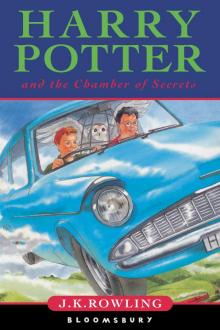 Harry Potter and the Chamber of Secrets
Harry Potter and the Chamber of Secrets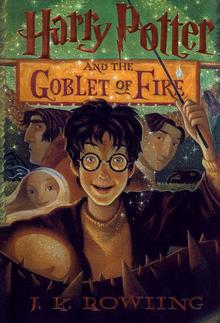 Harry Potter and the Goblet of Fire
Harry Potter and the Goblet of Fire Harry Potter and the Deathly Hallows
Harry Potter and the Deathly Hallows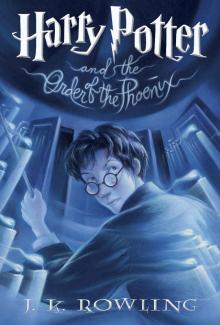 Harry Potter and the Order of the Phoenix
Harry Potter and the Order of the Phoenix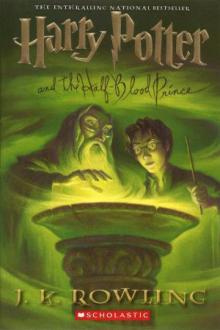 Harry Potter and the Half-Blood Prince
Harry Potter and the Half-Blood Prince Harry Potter and the Prisoner of Azkaban
Harry Potter and the Prisoner of Azkaban Fantastic Beasts and Where to Find Them
Fantastic Beasts and Where to Find Them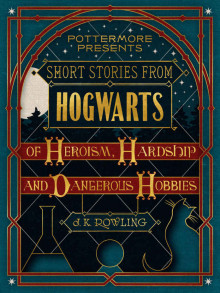 Short Stories from Hogwarts of Heroism, Hardship and Dangerous Hobbies
Short Stories from Hogwarts of Heroism, Hardship and Dangerous Hobbies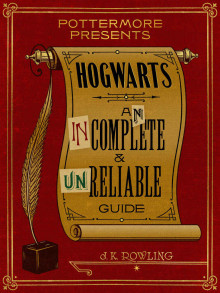 Hogwarts: An Incomplete and Unreliable Guide
Hogwarts: An Incomplete and Unreliable Guide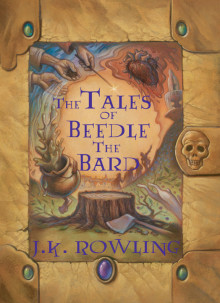 The Tales of Beedle the Bard
The Tales of Beedle the Bard The Casual Vacancy
The Casual Vacancy Harry Potter and the Cursed Child
Harry Potter and the Cursed Child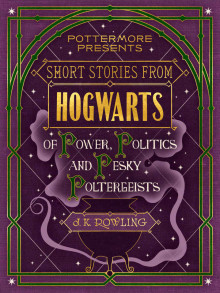 Short Stories from Hogwarts of Power, Politics and Pesky Poltergeists
Short Stories from Hogwarts of Power, Politics and Pesky Poltergeists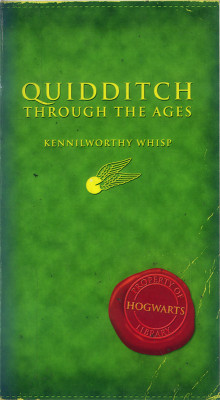 Quidditch Through the Ages
Quidditch Through the Ages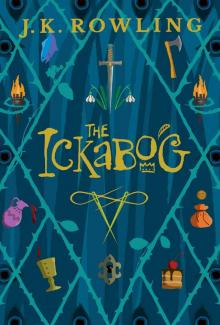 The Ickabog
The Ickabog![Fantastic Beasts, The Crimes of Grindelwald [UK] Read online](http://i1.bookreadfree.com/i/03/19/fantastic_beasts_the_crimes_of_grindelwald_uk_preview.jpg) Fantastic Beasts, The Crimes of Grindelwald [UK]
Fantastic Beasts, The Crimes of Grindelwald [UK]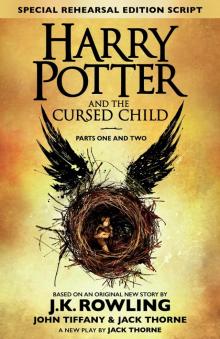 Harry Potter and the Cursed Child: Parts One and Two
Harry Potter and the Cursed Child: Parts One and Two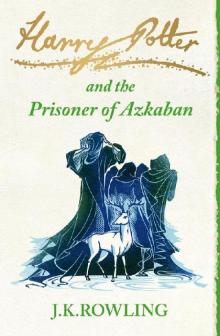 The Prisoner of Azkaban
The Prisoner of Azkaban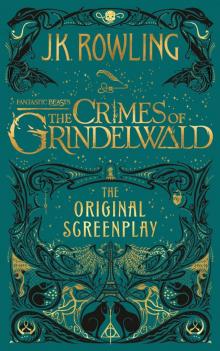 Fantastic Beasts: The Crimes of Grindelwald
Fantastic Beasts: The Crimes of Grindelwald The Hogwarts Library Collection
The Hogwarts Library Collection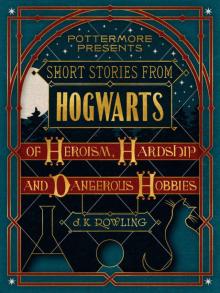 Short Stories from Hogwarts of Heroism, Hardship and Dangerous Hobbies (Kindle Single) (Pottermore Presents)
Short Stories from Hogwarts of Heroism, Hardship and Dangerous Hobbies (Kindle Single) (Pottermore Presents)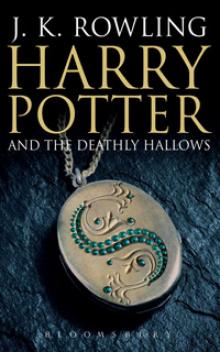 Harry Potter and the Deathly Hallows hp-7
Harry Potter and the Deathly Hallows hp-7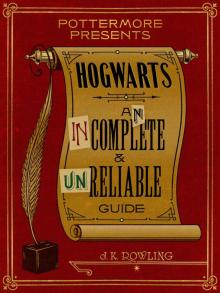 Hogwarts: An Incomplete and Unreliable Guide (Kindle Single) (Pottermore Presents)
Hogwarts: An Incomplete and Unreliable Guide (Kindle Single) (Pottermore Presents)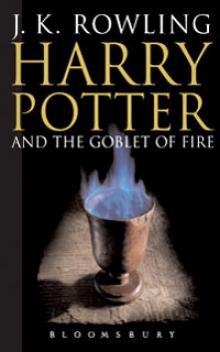 Harry Potter and the Goblet of Fire hp-4
Harry Potter and the Goblet of Fire hp-4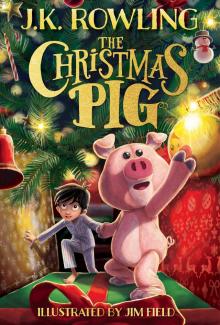 The Christmas Pig
The Christmas Pig Harry Potter and the Sorcerer's Stone
Harry Potter and the Sorcerer's Stone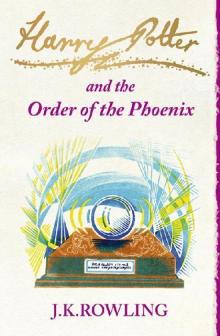 The Order of the Phoenix
The Order of the Phoenix Harry Potter and the Prisoner of Azkaban hp-3
Harry Potter and the Prisoner of Azkaban hp-3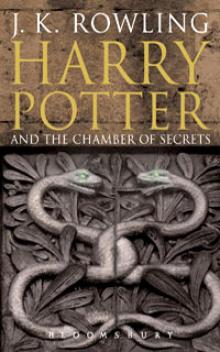 Harry Potter and the Chamber of Secrets hp-2
Harry Potter and the Chamber of Secrets hp-2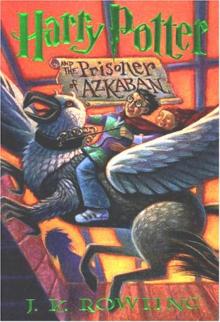 HP 3 - Harry Potter and the Prisoner of Azkaban
HP 3 - Harry Potter and the Prisoner of Azkaban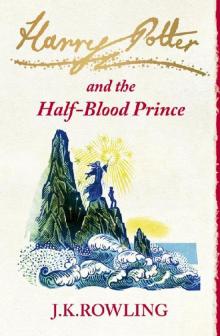 The Half-Blood Prince
The Half-Blood Prince The Hogwarts Collection
The Hogwarts Collection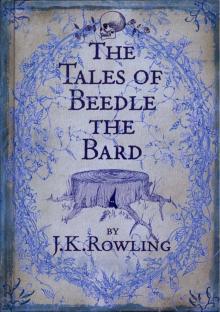 Tales of Beedle the Bard
Tales of Beedle the Bard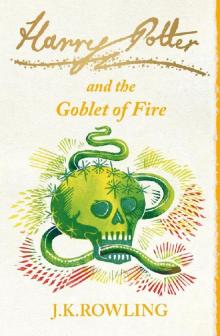 The Goblet of Fire
The Goblet of Fire Harry Potter and the Half-Blood Prince hp-6
Harry Potter and the Half-Blood Prince hp-6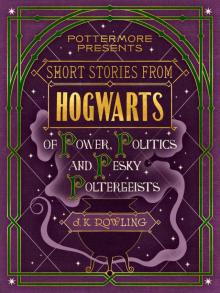 Short Stories from Hogwarts of Power, Politics and Pesky Poltergeists (Kindle Single) (Pottermore Presents)
Short Stories from Hogwarts of Power, Politics and Pesky Poltergeists (Kindle Single) (Pottermore Presents)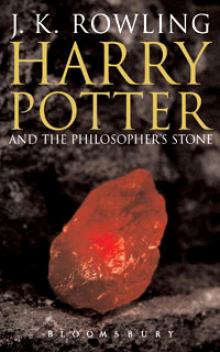 Harry Potter and the Sorcerer's Stone hp-1
Harry Potter and the Sorcerer's Stone hp-1